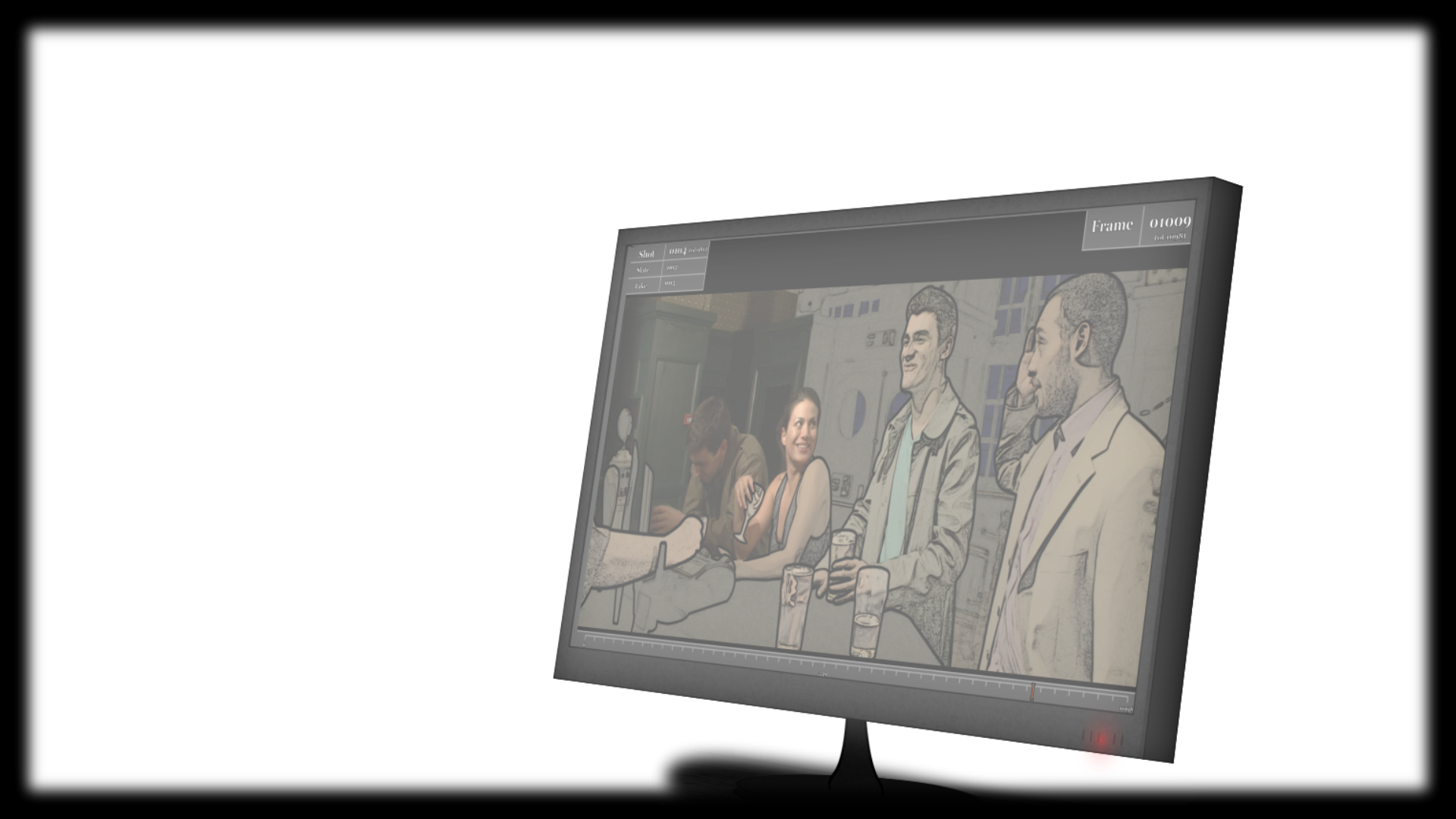






Shooting
‘S|T|R|A|Y|S’ was digitally filmed live-action, on location in London, with a small but professional, traditionally structured crew. Using modified cameras and an alternative lighting system developed by Barnaby and the film’s Director of Photography, Chris Haggan, the film was shot in eighteen days.
The unique approach to the filming process allowed for far more flexibility than a normal location shoot, where booms were encouraged to be in shot, allowing for the best possible recording of dialogue, and continuity props and set dressing could be added or removed as physical constraints required.

Editing
The editorial process was also unusual. The film was cut down traditionally, from its 150 minute assembly to its final running time. However, whilst the film was being edited for performance, scene structure and timing, it also had to accommodate a vast array of elements not in the frame, including continuity elements and the physical text dialogue, all of which had to be annotated in picture, for timings as part of the rotoscoping/animation process.
Due to the time-consuming and labour intensive nature of the rotoscoping process, it was imperative to have the edit as close to locked as possible before beginning the rotoscoping process, in order to avoid producing ‘wasted’ frames.

Rotoscoping and Animation
The unique aesthetic of ‘S|T|R|A|Y|S’, which treads a fine line between live action and animation, was developed by the film’s director, Barnaby Miller.
Using customised hardware, a unique workflow and a myriad of different software, Barnaby undertook the momentous task of digitally drawing over the top of every frame.
The challenges of the technique were not limited to the sheer volume of work, producing 122,374 still frames, but also animating certain props and backgrounds, ensuring a natural motion of the characters between frames and retaining all the nuances and micro-expressions of the cast’s performances. This process took 49 months.

Colour
Due to the unique nature of the post-production workflow, where each shot has over two hundred layers of material, Barnaby performed all colour correction himself, using additional custom calibrated equipment. The resulting colour corrected footage was then delivered to Goldcrest Post Production for a final two day session of quality control and specific element corrections by the Film’s D.I. Colourist, Lee Clappison.

Scoring
The score, composed, produced and performed entirely by Christoph Bauschinger uses a unique approach to leitmotif, emphasising theme rather than character, all whilst avoiding heavy use of percussion that would clash with the sound design elements.
The continuous score also blurs the boundaries between the film world and the traditional accompaniment, where specific moments and actions are often highlighted through musical phrases rather than traditional sound effects.

Sound Design
The percussive dialogue of the film is timed and structured to replicate the syllabic delivery and intonation of the cast’s original performances. Jamie Roden, the Sound Designer, shaped both the percussive and on-set dialogue to flow seamlessly, subconsciously tricking the audience in to ‘hearing’ some dialogue that they actually haven’t.
In keeping with the film’s unique look, feel and score, traditional techniques of foley work and ADR were rejected, instead using percussive elements to mimic moments of on-screen action.